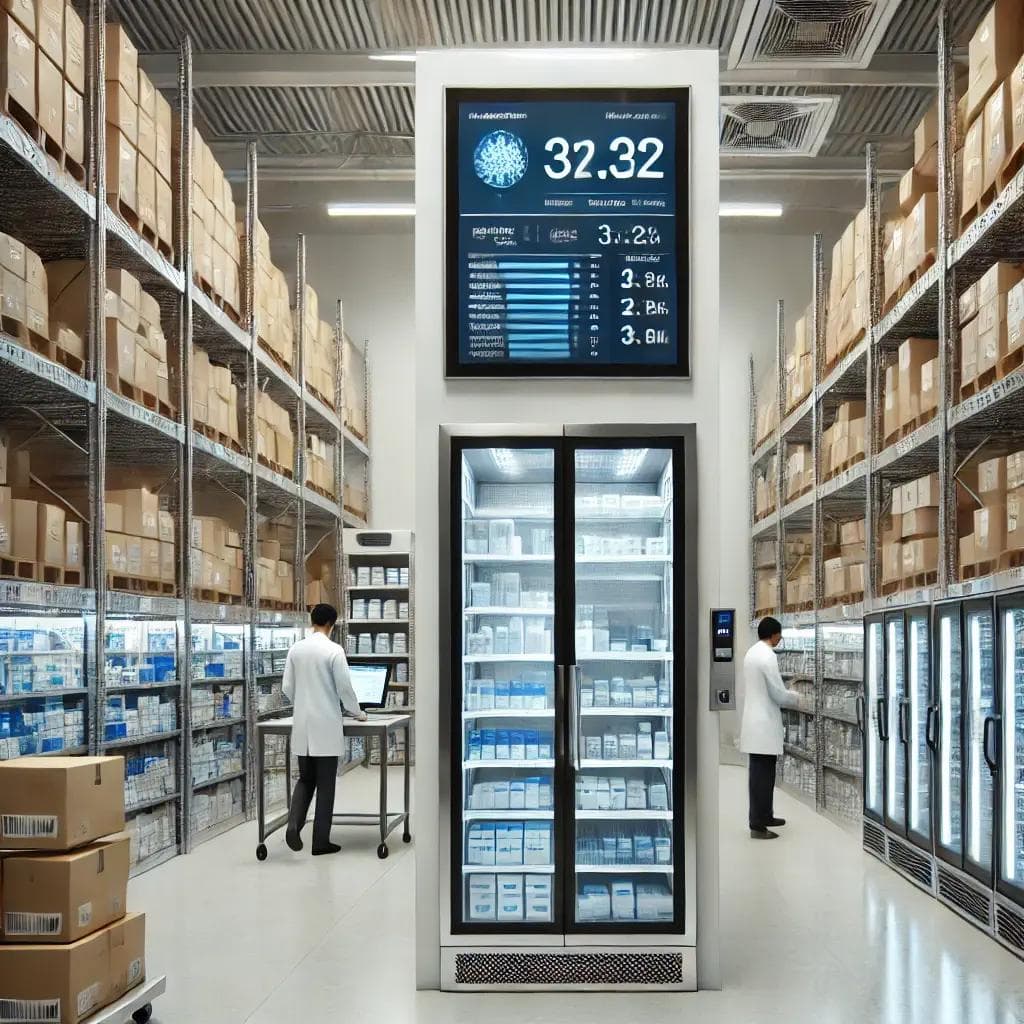Healthcare Infrastructure in East Africa: Building Resilient Medical Supply Chains
Analyzing the complexities of healthcare delivery in East Africa, with a focus on pharmaceutical distribution networks, cold chain management, and innovative last-mile solutions for remote communities.

Bol Thiang
CEO @Northern Hemisphere Group
The Healthcare Supply Chain Challenge in East Africa
The healthcare landscape in East Africa presents a complex web of challenges that affect over 450 million people across the region. At the heart of these challenges lies a critical question: how do we ensure reliable access to essential medicines and medical supplies in areas where infrastructure is limited and environmental conditions are harsh? This question becomes particularly pressing in South Sudan, where geographical barriers, limited infrastructure, and extreme weather conditions create formidable obstacles to healthcare delivery.
In our experience at Northern Hemisphere Group, the challenges of healthcare supply chains in East Africa extend far beyond simple logistics. They touch upon fundamental issues of infrastructure development, community access, and public health resilience. Traditional supply chain models, designed for regions with established infrastructure and stable conditions, often fail to address the unique challenges faced in East African contexts.
Understanding the Regional Context
The complexity of healthcare delivery in East Africa stems from a combination of environmental, infrastructural, and social factors. In regions where temperatures regularly exceed 35°C, maintaining the integrity of temperature-sensitive medications becomes a daily challenge. This challenge is compounded by limited access to reliable power supply, particularly in rural areas where healthcare needs are often most acute.
Consider the situation in South Sudan's rural communities, where healthcare facilities face multiple interconnected challenges. Less than 40% have reliable electricity access, and only a quarter possess adequate cold storage capabilities. Many become inaccessible during the rainy season, creating critical gaps in healthcare delivery precisely when communities are most vulnerable to water-borne diseases.
Transforming Healthcare Supply Chains
The transformation of healthcare supply chains in East Africa requires a delicate balance between innovation and practicality. Through our work across the region, we've learned that successful solutions must be both technologically advanced enough to meet modern healthcare standards and robust enough to function in challenging environments.
Modern Solutions for Ancient Challenges
Our approach at Northern Hemisphere Group integrates traditional knowledge with cutting-edge technology. Consider our work in Western Equatoria State, where we implemented a hybrid system combining solar-powered cold storage with community-based distribution networks. This project demonstrated how modern technology could be successfully adapted to local conditions and cultural practices.
The cornerstone of our success has been the development of a temperature-controlled supply chain network that spans multiple countries. At its heart lies a sophisticated system of solar-powered cold storage units, strategically placed to create a reliable cold chain from regional distribution centers to local clinics. Real-time temperature monitoring ensures the integrity of sensitive medical supplies, while backup systems provide redundancy in critical locations.
Quality Assurance and Safety: A Non-Negotiable Priority
In healthcare logistics, there's no room for compromise when it comes to quality. Our comprehensive approach to quality assurance has redefined standards for pharmaceutical distribution in challenging environments. Through rigorous testing, continuous monitoring, and robust documentation, we ensure that every medication reaching a patient meets the highest quality standards, regardless of the journey it took to get there.
Environmental monitoring plays a crucial role in our quality assurance system. We've installed sophisticated monitoring systems across our network that track not just temperature, but also humidity, light exposure, and other critical parameters. When deviations occur, our automated systems immediately alert our quality control team, enabling rapid response to potential issues before they affect product quality.
Training and capacity building form another pillar of our quality assurance strategy. We've developed comprehensive training programs that go beyond basic operating procedures to include:
- Advanced cold chain management techniques
- Emergency response protocols
- Documentation and compliance requirements
- Quality control testing methodologies
Innovation in Healthcare Delivery
The last mile of healthcare delivery often presents the greatest challenge. In remote areas of South Sudan, where conventional infrastructure is minimal, innovative approaches become essential. We've pioneered the use of mobile health units equipped with solar-powered refrigeration systems and basic diagnostic capabilities. These units don't merely deliver medications; they bring comprehensive healthcare services to communities that would otherwise lack access.
Digital Transformation in Healthcare Supply Chains
Technology serves as a force multiplier in our healthcare delivery efforts. We've implemented a blockchain-based tracking system that provides end-to-end visibility of pharmaceutical products from manufacturer to patient. This system has virtually eliminated the risk of counterfeit medications entering our supply chain while providing real-time inventory visibility across our entire network.
Our digital transformation extends to predictive analytics and machine learning applications. By analyzing historical data patterns, we can now predict demand surges, optimize delivery routes, and preemptively address potential supply chain disruptions. This data-driven approach has resulted in a 40% reduction in stockouts and a 60% improvement in delivery efficiency.
Case Studies in Healthcare Innovation
Juba Regional Distribution Center
The transformation of our Juba facility into a state-of-the-art distribution center serves as a model for modern healthcare infrastructure in challenging environments. The facility combines advanced technology with practical solutions adapted to local conditions. Its success lies not just in its sophisticated systems, but in how these systems have been integrated with local capabilities and needs.
The center has revolutionized healthcare delivery in South Sudan through:
The implementation of a smart inventory management system has reduced stock discrepancies by 85% and improved order fulfillment rates to 98%. More importantly, it has created a reliable supply of essential medicines for over 200 healthcare facilities across the region.
Rural Health Initiative Success Story
In Lakes State, our rural health initiative demonstrates the impact of integrated healthcare solutions. Working with local communities, we established a network of solar-powered health posts equipped with essential medical supplies and basic diagnostic capabilities. The project has transformed healthcare access for over 50,000 people across 30 villages.
The initiative's success stems from its community-centered approach. Local health workers received comprehensive training in basic healthcare delivery and supply chain management. This investment in human capital has created a sustainable model for rural healthcare delivery that continues to evolve and improve.
Future Directions and Sustainability
Looking ahead, we see several emerging trends that will shape the future of healthcare infrastructure in East Africa. Telemedicine and digital health solutions will play an increasingly important role, particularly in reaching remote communities. We're already piloting several initiatives that combine mobile technology with our existing infrastructure to extend healthcare access further into underserved areas.
Environmental Sustainability
Environmental sustainability remains at the forefront of our development strategy. Our newest facilities incorporate green building principles, renewable energy systems, and water conservation measures. We're also exploring innovative solutions for medical waste management, including the establishment of regional processing centers that serve multiple healthcare facilities.
Building Resilience
The COVID-19 pandemic highlighted the importance of resilient healthcare systems. We're strengthening our infrastructure to better respond to future health crises through:
- Enhanced storage capacity for essential medicines
- Flexible distribution networks that can quickly adapt to changing needs
- Improved cold chain capabilities
- Stronger partnerships with local and international healthcare organizations
Conclusion
The journey toward robust healthcare infrastructure in East Africa is ongoing. While challenges remain, our experiences demonstrate that innovative solutions, combined with deep local understanding and strong partnerships, can create lasting positive change. As we continue to expand and enhance our healthcare infrastructure, we remain committed to our core mission: ensuring reliable access to quality healthcare for all communities in East Africa.